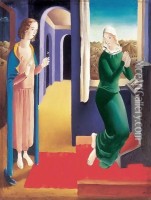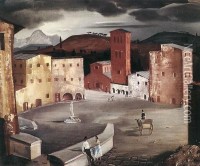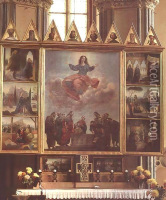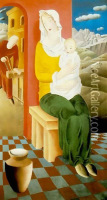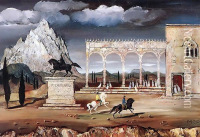Orban Dezso Paintings
Dezső Orbán was a Hungarian-Australian painter, known for his contributions to the art scene in both his native country of Hungary and his adopted country of Australia. Born on November 22, 1884, in Győr, Hungary, Orbán was initially trained as an architect. However, his passion for painting soon overtook his architectural pursuits, and he became a full-time artist.
Orbán's early work was influenced by the Nagybánya artists' colony, which was the center of Hungarian impressionism and post-impressionism, and where he studied from 1906 to 1908. There, he absorbed the plein air painting techniques and the focus on light and color that would characterize his later work. After his time in Nagybánya, he moved to Paris, which was the epicenter of the art world at the time. During his time in Paris, Orbán became influenced by the work of Cézanne and Matisse, which would further inform his approach to painting.
In the interwar period, Orbán traveled and exhibited extensively throughout Europe, including Italy, France, and the United Kingdom, while maintaining a strong presence in the Hungarian art scene. His style continued to evolve, incorporating elements of cubism and expressionism. The political turmoil of the 1930s and the impending threat of World War II compelled Orbán to leave Europe.
In 1939, Orbán relocated to Australia, where he would play a significant role in the development of modernist art. Settling in Sydney, he became a prominent figure in the local art community, advocating for the appreciation of modern art styles and teaching a new generation of Australian artists. Orbán founded the influential Sydney Art School in 1943, where he taught for many years.
Orbán continued to paint and exhibit his work in Australia, and his paintings from this period show a vibrant use of color and a continued exploration of the possibilities of form and composition. His Australian landscapes and cityscapes captured the unique light and atmosphere of his adopted home.
Dezső Orbán's contribution to art was recognized in Australia with several awards, and his work is held in numerous Australian and international collections. He continued to paint until his death on October 3, 1957, in Sydney, Australia. Orbán's legacy as an artist and teacher has left a lasting imprint on the art historical narratives of both Hungary and Australia.
